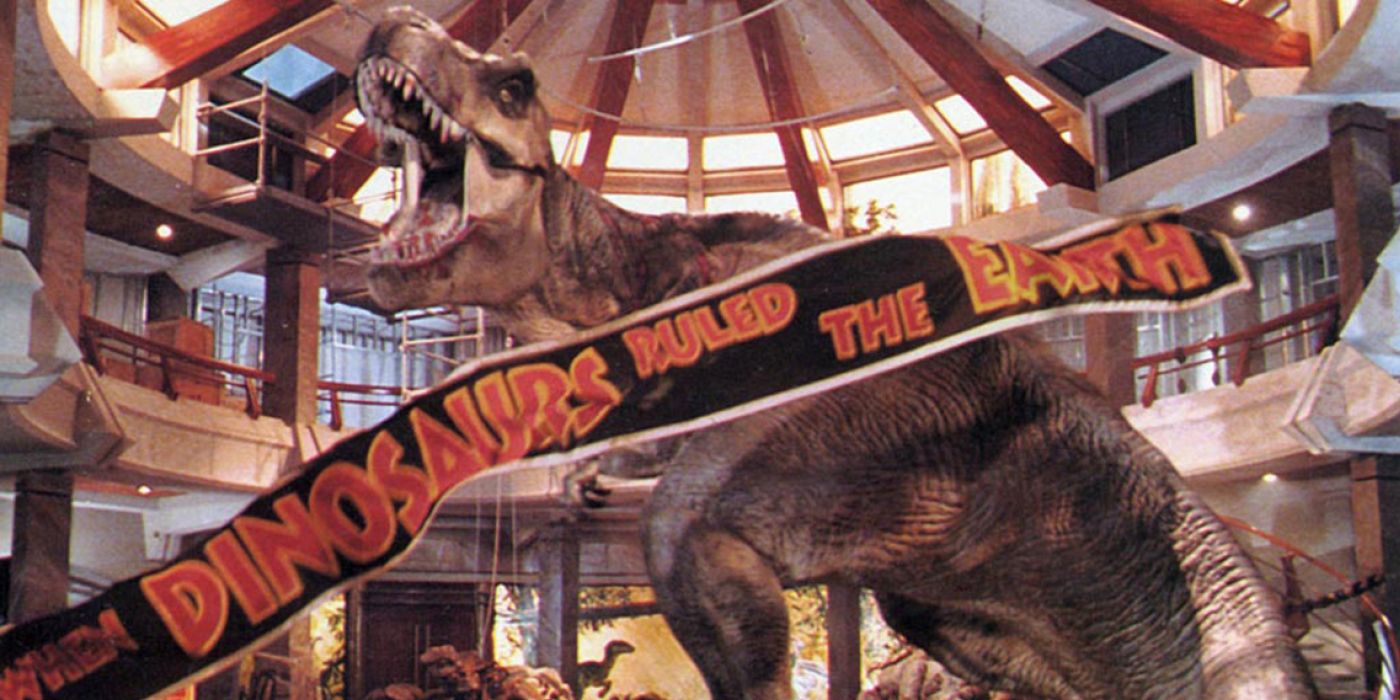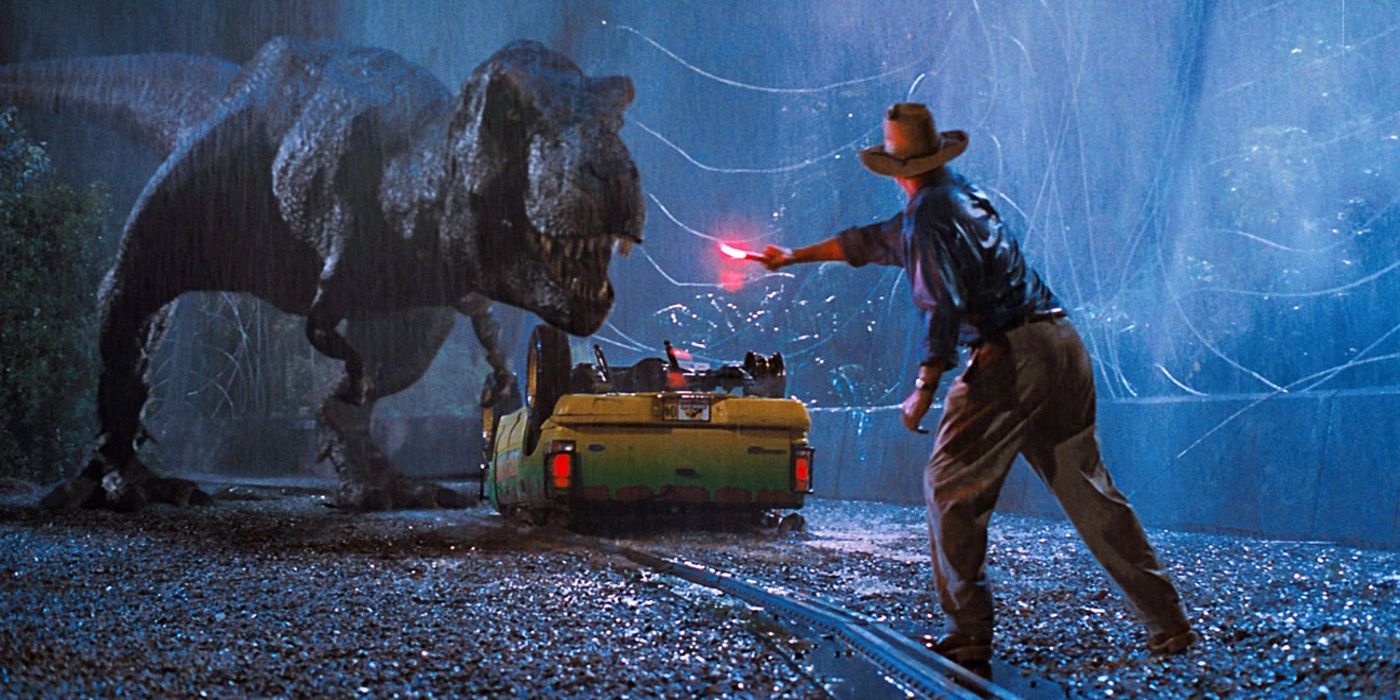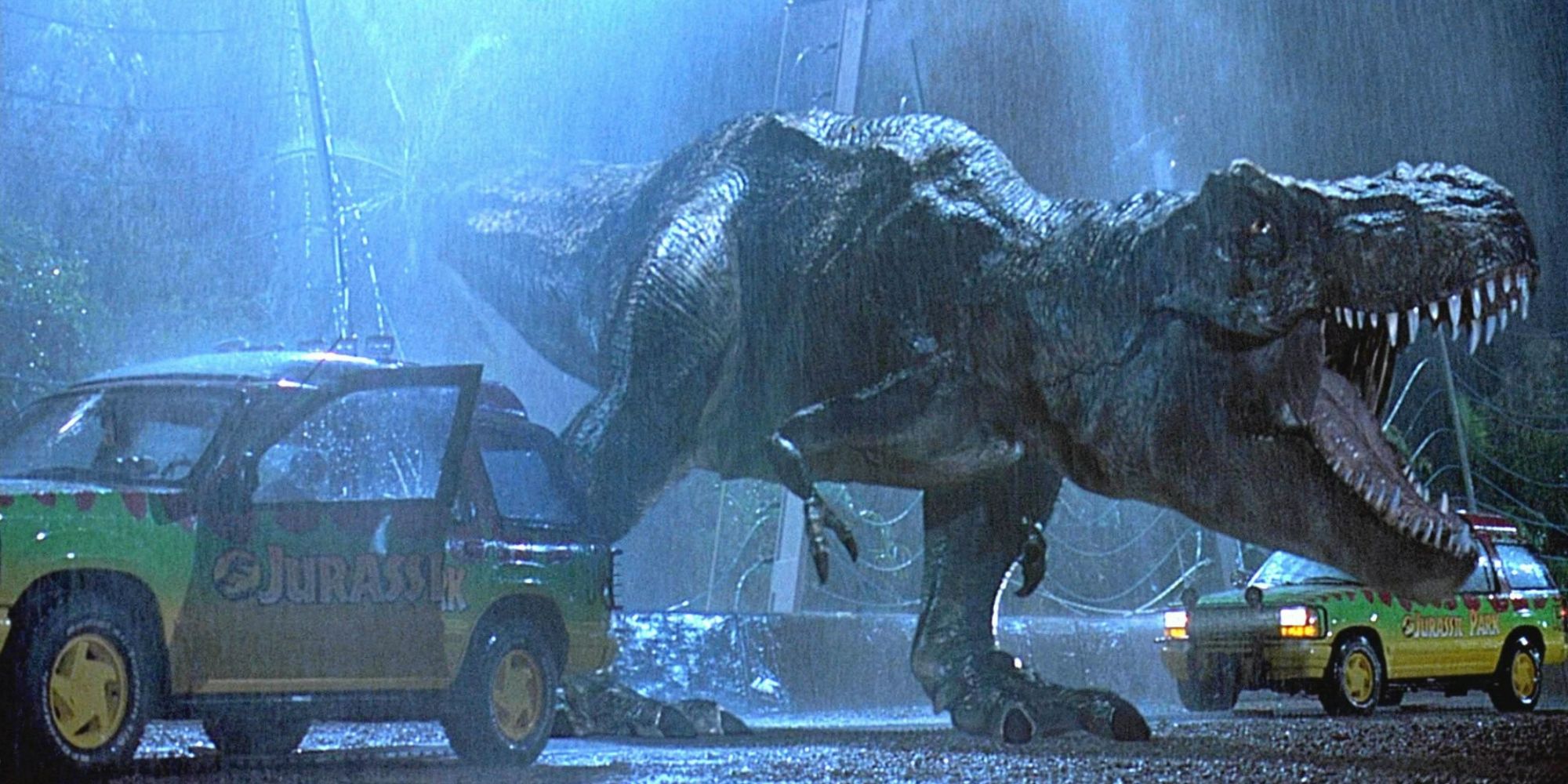Jurassic Park was a sci-fi creature feature that proved to be more than a movie about dinosaurs eating people. Instead, it was a critical look at the dangers of genetic power and how people's ambitions could sometimes get in the way of logic. Nevertheless, the spectacle of the movie made it one of the most important contributions to cinema in the past century and pushed visual effects to the limit. But its success didn't mean that there wasn't the occasional roadblock during production.
Like all huge blockbusters, sometimes the best things that come of them, besides the movie itself, were the behind-the-scenes stories. For example, Jaws had a fair share of secrets during production that has only enhanced the story decades later. One of the best examples of this was that the star of the show, the shark, barely worked in salt water. The same could also be said for Jurassic Park's T-Rex, which had a nasty habit of "coming to life" at the worst times.
Jurassic Park's T-Rex Had a Surprising Habit
Jurassic Park was one of the earliest examples of blending practical and computer effects to create characters for a movie. The T-Rex was one of the largest in the movie and had to balance these effects to properly create her big escape scene. As a result, a large animatronic was created for when the Rex would attack the overturned jeep. It was even fitted with lifelike skin to make it look more alive than ever. However, the one thing that the creators of the animatronic hadn't accounted for was rain, as a YouTube explainer broke down.
Because the Rex was meticulously made, that meant that eight calculations were made for everything so that it moved as smoothly as possible. That said, what the creators hadn't factored in was water weight and when it did rain, the added pounds would make the Rex shake involuntarily. What made this so scary was that it wasn't ever expected. Essentially, a massive dinosaur would move on its own at a moment's notice. And the only way to fix it was to pat the dino dry with towels.
The Shaking Rex Showed How Advanced Jurassic Park Effects Were
While the shaking T-Rex wasn't planned in the grand scheme, this minor malfunction proved just how important Jurassic Park was to the medium. Creators were working on projects that had never been done before and, as a result, charted new territory in practical effects. Because of what was done in Jurassic Park, future installments could create even more realistic-looking and animated dinosaurs. It also allowed those working on the CGI models to make them even more lifelike, showing the line between real and fake had become more blurred.
Now, 30 years later, Jurassic Park has still held up both in computer and practical effects. What it did for audiences also captured the imagination of a generation. However, it couldn't have been done without the minor hiccups that the creators encountered. While a shaking T-Rex was nothing short of scary, it served as a benchmark for how new the effects they were making were and how far they could take it decades later.



